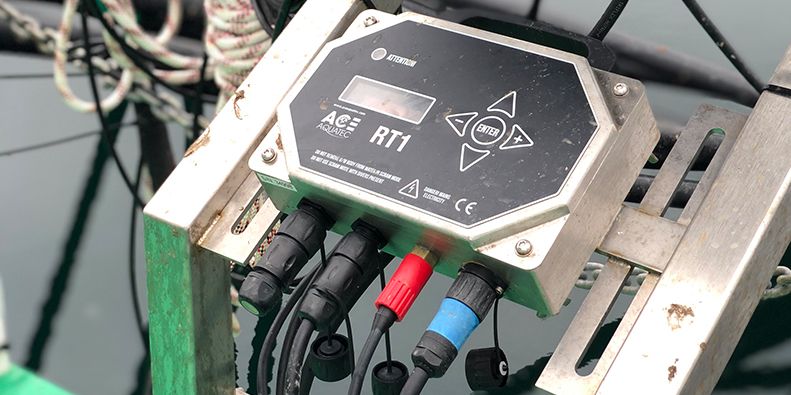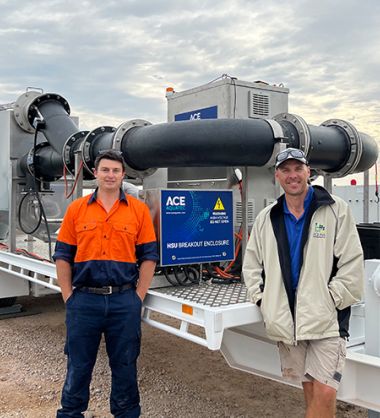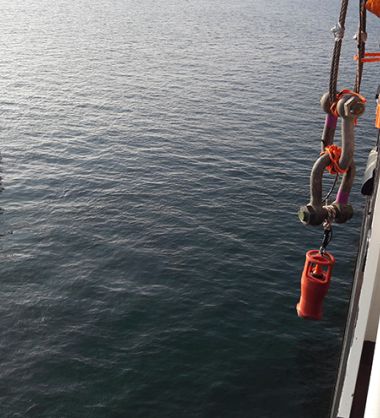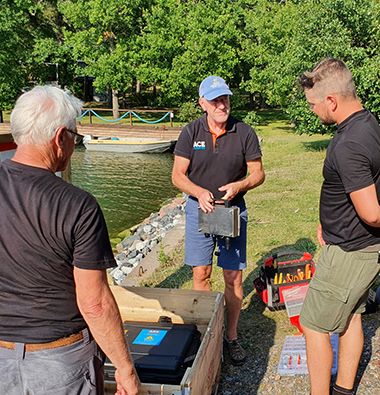Startle response put to the test
11 August 2023

In collaboration with the Sustainable Aquaculture Innovation Centre (SAIC), University of St Andrews, and Scottish Sea Farms, Ace Aquatec has been involved in a Scottish project that aims to provide evidence that there is no negative impact on non-target marine species when (tested) low-frequency acoustic protection systems are used on fish farms.
The first phase of the project, conducted in Orkney, provided evidence that the low-frequency signal is less audible to harbour porpoises, the UK’s most common cetacean species, and therefore less disruptive to their natural behaviour.
Currently, the use of acoustic deterrent devices (ADDs) in Scotland is under review by Scottish Government Marine Directorate. In 2021, farmers stopped using first-generation systems, which have the potential to cause harm to marine mammals. Since then, the sector has seen an increase in predator-related fish mortalities, which cost farms approximately £12 million annually, according to sector body Salmon Scotland.
‘Seal predation has a huge impact on the salmon farming sector, both in welfare and economic terms,’ said Dr Nina Valentine, R&D Specialist at Ace Aquatec and the company’s lead scientist in the trial.
‘There have been a lot of different devices used over the years to prevent the seals getting into the pens, including reinforced nets, double netting, and more traditional acoustic barriers.
‘The nets can deter seals from entering the pen but are not fool proof and the seals still cause enormous stress to the salmon. When salmon get stressed, they become more susceptible to disease and parasites and can be put off their food, which hinders their growth.’
In 2015, Ace Aquatec developed the first commercially available low-frequency Acoustic Startle Response device (A-ASR®) operating at 1-2 kHz, which was designed to discourage seals from attacking net pens whilst having minimal impact on non-target species. In order to validate the technology, a trial in Orkney that was backed by SAIC, was conducted to determine the audibility of the low-frequency A-ASR® to harbour porpoises and to identify any potential negative effects when used in long-term deployments. Ace Aquatec modified the software to accommodate a lower frequency range at an optimal 0.8-1.2 kHz, with peak volumes of 180 decibels, and five monitoring sites were programmed to record the presence of porpoises.
Nathan Pyne-Carter, CEO of Ace Aquatec, said: ‘The trial was a success and has provided the requested evidence for Scottish Government Marine Directorate to determine that no negative impact occurs when Ace Aquatec’s low-frequency acoustic systems are deployed on fish farms. The research will facilitate the rapid granting of EPS (European Protected Species) licences across Scottish fish farms for these environmentally responsible predation mitigation systems.’
Lead researcher Alex Coram, of the Scottish Oceans Institute at St Andrews, said: ‘This project improved our understanding of low-frequency acoustic protection devices and how they can be used in a sustainable way that does not impact sensitive marine species.
‘It also demonstrated a robust new method for quantifying the potential impact of underwater sound on harbour porpoises.’
Andrew Gillespie, Marine Protection Products Business Manager at Ace Aquatec, said: ‘The way the acoustic startle response is designed allows for short, randomised low-frequency tonal bursts to be emitted, which means that seals are less likely to become habituated.
‘Unlike the older style ADDs, which created an acoustic barrier around a pen, the startle response creates a behaviour change, so that breaks in the acoustic signal do not lead to a window for predation. Our fish farming clients are already investing in predator netting, but this doesn’t appear to stop seals from circling pens and causing stress to the fish.’
‘It’s important that we can supplement the net technology and provide a comprehensive approach to improve fish welfare. This trial will hopefully provide further third-party validation of the Ace Aquatec system.’
Heather Jones, CEO of SAIC, added: “Since ADDs were first developed for aquaculture, technology has evolved and researchers have access to more data than ever before to monitor their potential effect on sea life. We’re pleased to see SAIC-supported research helping to drive this innovation forward.”


